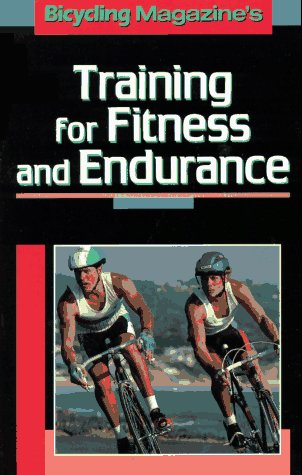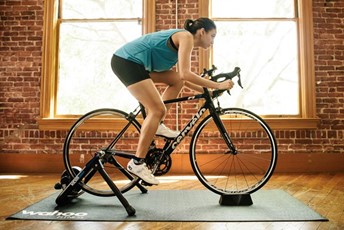Cycling Tips – Cadence.
About a year after I joined Anerley B.C I went to Vancouver to visit my daughter who was living there. Being a relative newby to cycling, I went to a book shop to see if they had any interesting books on cycling. I found this one, for in UK money, about £5. It proved to be worth every penny!

For me it was a great education, covering a wide range of useful tips to aid and improve cycling abilities. One of the many topics was cadence, as result of which, I later bought a bike computer which included a cadence reading. This was some 15 years ago when the Cateye computer cost me about £25. You can now pay as much as £ 350 for a Garmin Edge, which does everything except turn the pedals for you!
So I was very interested to see the subject of cadence raised by Vince a couple of weeks back, on Anerley Chat. Vince had just added a cadence set up to his Strava app and was recommending that we should try to maintain a cadence (pedal at a speed) of circa 90 revolutions per minute. This is very good advice for a number of reasons. One of which Vince mentioned, being that spinning at 90 rpm in an easy gear saves wear and tear on your knees. By the age of 60 most of us will have the onset of arthritis, so don’t make it worse by struggling up hills in the wrong gears!
Vince suggested a cadence of 90. But why the magic number of 90 pedal strokes a minute?
Well it does not have to be 90, it could be 80 or 85, or if you are a sprinter by nature, even 95 or 100. The figure of 90, is what has been found to be the most common average of well trained cyclists. Of course, when you get to the bottom of the 30% climb up Cudham Hill, you won’t be able to maintain a cadence of anything like 90, so hills are an obvious exception to the suggested 90 r.p.m. Just get into you lowest gear and hope for the best! Just remember on any climb, use your gears sensibly so that you can spin your way up, rather than knackering your knees by trying to muscle your way up.
Like most new cyclists, me included, I felt most comfortable at a cadence of circa 70 to 75. And common sense told me that to go faster I just had to press harder on the pedals. But as time went by I learnt that the correct way to go faster was not to press harder, but to pedal faster. That is why modern bikes have lots of gears! As a rough guide, for every 2% increase in gradient, change down one gear. So with modern bikes having 20 gears or more, even the steepest of hills should be manageable. But not all at 90 r.p.m!
The book I mentioned above is one of many from the U.S publishers of Bicycling https://www.bicycling.com/ https://www.bicycling.com/ I am a subscriber to their web site. Some time back this item provided some of the science and more information about cadence.

If you train to increase your cadence, you’ll improve your cycling efficiency, allowing you to pedal for longer, faster.
Why?
When you pedal faster, you put less strain (i.e. force) on your muscles with each stroke. You ride in a lower gear, and as a result, use your slow-twitch muscle fibres. These burn fat for fuel, are resistant to fatigue and recover quickly when allowed to rest. Also, a higher cadence means an increase in blood flow to the muscles – which in turn, means more oxygen in the blood and a higher aerobic performance.
On the other hand, a low cadence at a high gear is more taxing on the muscles. It uses fast-twitch fibres, which burn glycogen for fuel, fatigue quickly, and take a long time to recover before they can be used again. In other words, muscle strength doesn’t last long, so you’ll start to feel the burn faster than at a higher cadence.
You might think that pedaling faster would be harder on your cardiovascular system, but that isn’t the truth. The cardiovascular system is a highly efficient system. Unlike the muscular system, it doesn’t take long to recover, and it is only limited by its capacity – how much air it’s getting in at any given time – not by how much work has already been done.
So what’s the ideal cadence for a cyclist?
While there’s no one magic number, aiming for 90 RPM is a good goal to avoid leg fatigue and making the most out of those slow-twitch muscles. Average cyclists have a cadence of about 60 RPM; advanced and elite cyclists pedal anywhere from 80 to 100 RPMs.
However, changing your cadence isn’t something you can do overnight – it takes time and practise. Your body has adapted to your current cadence and changing it requires work from all of your body’s systems: neural, muscular, cardiovascular, metabolic, etc.
HOW TO DETERMINE + IMPROVE CADENCE
Practicing to ride at a higher cadence will make your pedal stroke more efficient. By maintaining a steady cadence throughout your ride, you’ll become a better rider. On hills, as you climb, adjust your gear, so it’s easier and keep your RPMs consistent.
To improve your cadence, start off with shorter extreme efforts as well as longer more modest efforts. Why? By hitting cadence numbers beyond the norm, you’re training your brain to fire signals in the patterns required for your muscles to contract far more rapidly. Then when you hit normal numbers, it doesn’t seem as hard. Here are some drills to help you get a higher cadence
WARM UP. Improve with intervals at 10–30 rpm over your normal cadence in your warm ups or as a workout each week. Try 4 x 1 minute intervals at 110–120 rpm.
SPINNING. Once warmed up hold a minute each at 90, 100, 110rpm, then spend two minutes at your preferred cadence, before repeating the 90, 100, 110 spin drills for two minutes each. Do this once more for three minutes at a time before descending through two and one minute spin intervals. Aim to hold periods of 20 minutes of these spinning sessions.
MORE SPINNING. For this drill, start at your normal cadence, and then shift to an easier gear a couple of notches lower than you would normally ride. Continue for five minutes at this new cadence (which should be between 90 and 120 RPMs) and return to your normal cadence. Try this several times during your ride during long flat sections.
HIGH CADENCE DRILL. When doing interval training insert high-cadence intervals of a few minutes each during the easy recovery periods. During each of these, pedal for a few minutes at a high cadence but with very light pressure on the pedals. Alternate with easy pedalling at a more normal, but brisk cadence. Over the course of several weeks extend the duration of each fast pedaling part of the recovery sections.
+ + + + + + + + +
The two important benefits of maintaining a high cadence are, first it will give you much greater endurance. And second that it will protect your knees during hilly rides. These two advantages are just what are needed for challenging rides, such as the hilly Audax rides that we will be training for, and later doing. So no excuses not to take the above advice.
